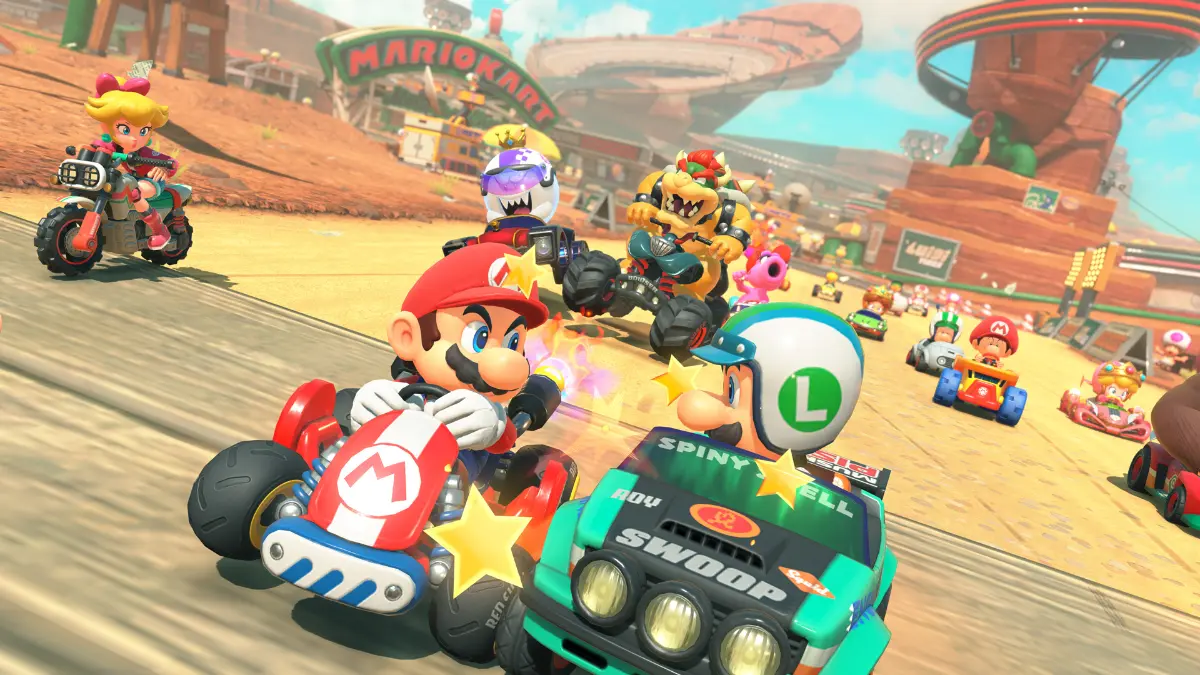
$80 Game Prices: Why Gamers Are Rebelling and Indies Are Winning
In June 2025, the video game industry is flirting with disaster. Nintendo’s $80 price for Mario Kart World on the Switch 2 and Microsoft’s plan to charge $80 for select Xbox titles starting this holiday season have ignited a fierce backlash. Gamers, already stung by the $60-to-$70 jump in 2020, see $80 as a greedy overreach, especially when a vibrant indie scene offers better value at half the cost. If $80 becomes the AAA standard, publishers risk alienating players, driving them to indies and subscriptions—even if indie prices rise, AAA’s $80 gamble could collapse under its own weight.
A Brewing Storm of Discontent
Gamers are livid about $80 games. Online forums like Reddit are flooded with complaints, with players calling the hike unjustifiable amid buggy launches, microtransactions, and DLC-heavy releases. Nintendo’s Mario Kart World, priced at $80 digital and $90 physical, drew particular ire for its “game-key card” physical copies—essentially download codes. Gamers question why a kart racer costs more than Sony’s $70 Spider-Man 2, a technical behemoth. Globally, the pain is worse: $80 USD means $90–$120 CAD or €80–€100 in Canada, Australia, or Europe, turning games into a luxury. With stagnant wages and rising living costs, many see gaming as increasingly unaffordable, fueling calls for piracy or free-to-play alternatives like Fortnite.
Indies: The Affordable Antidote
The indie scene is a lifeline for frustrated gamers. In 2025, titles like Clair Obscur: Expedition 33 ($50), Hollow Knight: Silksong ($40), and Kādomon: Hyper Auto Battlers ($30) deliver polish and innovation without the AAA price tag. Palworld ($30) and Helldivers 2 ($40) prove that mid-tier games can outshine blockbusters. Unlike AAA’s formulaic open worlds, indies like Balatro ($15) or Animal Well ($25) offer fresh mechanics and replayability. Reddit users rave about indies’ value, with one noting, “I’d rather spend $15 on Stardew Valley than $80 on a 20-hour epic that needs patches.” Accessible via Steam, itch.io, or Game Pass, indies make $80 AAA games feel like a rip-off. Even if indie prices climb to $40–$50, they’d still undercut AAA by a wide margin.
$80: A Pricing Stratosphere
The $80 price point exposes the AAA model’s flaws. Publishers cite rising costs (Spider-Man 2’s $300 million budget) and tariffs, but gamers argue digital distribution and microtransactions should balance the books. With the industry earning $200 billion in 2024, the “we need $80” excuse rings hollow, especially when deluxe editions already top $100. Analyst Mat Piscatella warns that only juggernauts like Grand Theft Auto VI or Call of Duty can justify $80; lesser titles risk tanking. Buggy releases like Anthem or Battlefield 2042 deepen skepticism—why pay a premium for broken games? If indies hit $40–$50, the $80 AAA price becomes indefensible, pushing players to safer bets.
The Industry’s High-Stakes Bet
The $80 push could backfire spectacularly. Gamers are embracing “patient gaming,” waiting for sales or sticking to older titles. Subscriptions like Game Pass, offering Gears of War: Reloaded or Call of Duty: Black Ops 7 at launch, undermine $80 purchases. If Sony or Take-Two adopt $80, the shift to subscriptions could accelerate, hurting traditional sales. The indie boom is a bigger threat: studios unburdened by bloated budgets can outmaneuver AAA giants. Hades ($25) and Among Us ($5) show how small teams can dominate. If $80 becomes standard, the market may split—AAA for brand-loyal fans, indies and AA for everyone else.
The Road Ahead
The $80 experiment is a gamble the industry can’t afford to lose. Nintendo and Microsoft are testing gamer tolerance, but the backlash suggests a breaking point. Sony and others are watching—will they follow or hold at $70? Gamers have options: indies offer creativity and value, while subscriptions soften the $80 blow. If publishers ignore the outcry, they risk losing players to a thriving ecosystem that respects their wallets. As one Reddit user summed it up, “Three indies beat one $80 game any day.” The industry must listen—or watch its blockbuster model crumble.